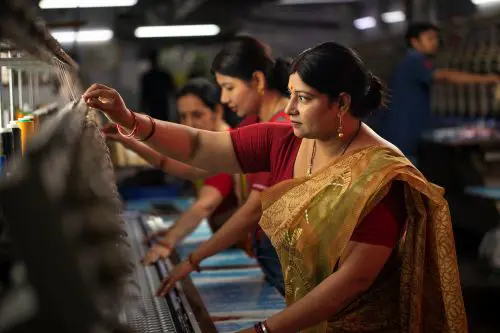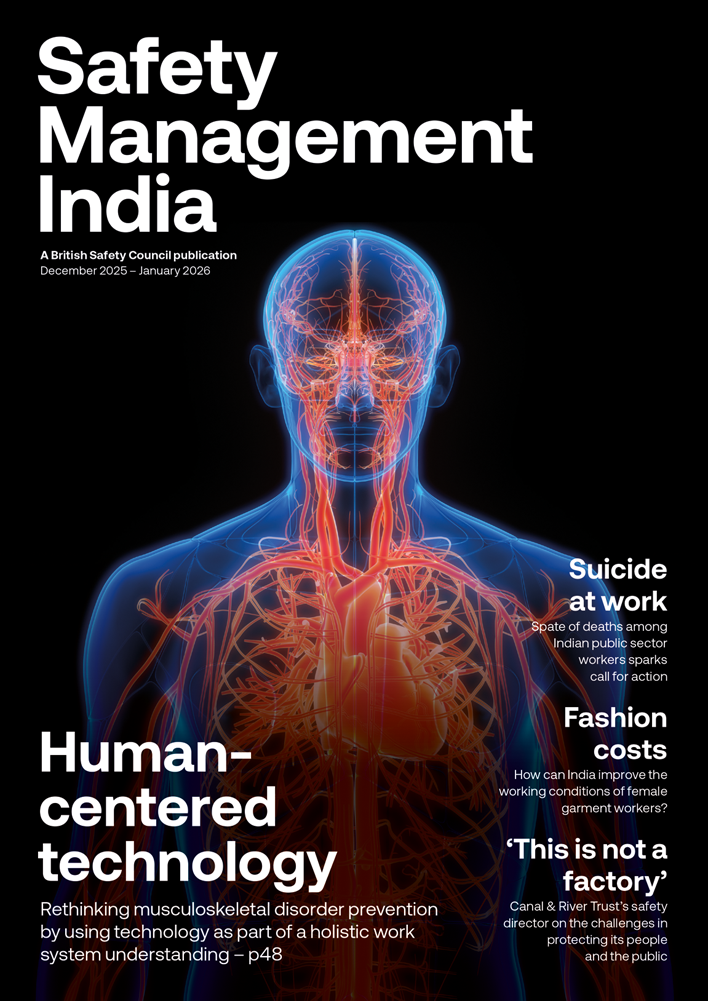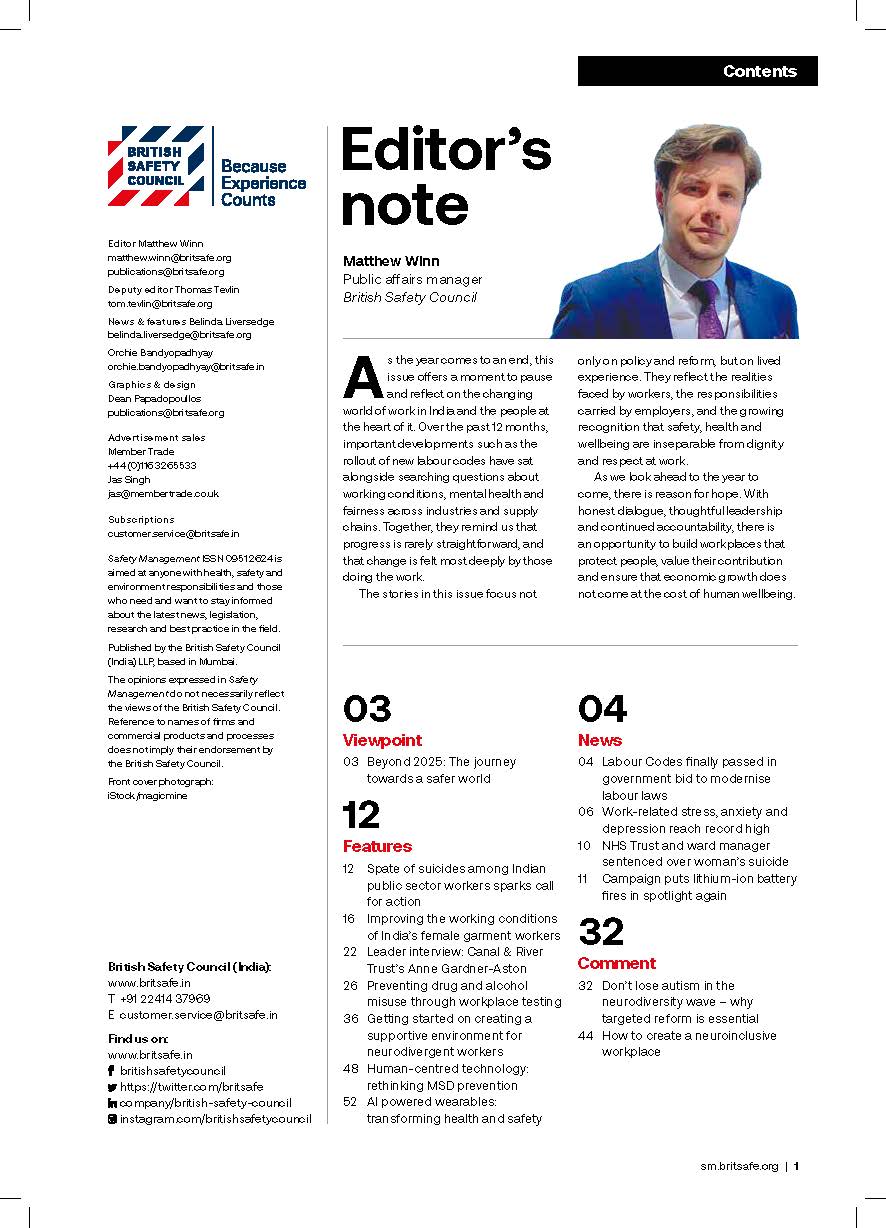High-profile collapses of under-construction bridges in India have claimed many lives in recent months – and led to renewed calls for greater government oversight of the activities of major construction companies to keep workers safe.
Features
Construction: a risky business
While India was celebrating the historic landing of a lunar lander and rover reconnaissance vehicle on the south pole of the Moon on 23 August, tragedy struck the north-eastern state of Mizoram when a railway bridge undergoing construction collapsed, killing 24 migrant labourers.
The incident happened near the town of Sairang, about 20 kilometres from Mizoram’s state capital, Aizawl. The bridge, which was being constructed over the Kurung River, is one of 185 bridges being constructed for the new 51 kilometre-long Bairabi-Sairang railway line, which will connect Mizoram to the rest of India. According to the line’s operator, Northeast Frontier Railway (NFR), the new line will boost “tourism and socioeconomic development”.
The Ministry of Railways has since established a high-level committee to investigate the cause of the collapse. The committee, which includes experts from the Ministry’s own Research Designs & Standards Organisation (RDSO) and the Indian Railways Institute of Civil Engineering (IRICEN), is due to report its findings in late September.
The piers, or columns, of the bridge had been constructed and a steel gantry or girder was being launched (or erected) to connect the two piers when the gantry collapsed, killing the 24 people working on it, the Indian Express reported. According to news reports, at least three other workers had to be rescued, including an injured worker who had to be brought down from the top of one of the bridge’s 100-metre high pillars.
Prime Minister Narendra Modi, who was in South Africa to attend the BRICS (Brazil, Russia, India, China and South Africa) summit said “all possible assistance” was being given to those affected.
The Prime Minister’s Office posted on the messaging platform X, formerly known as Twitter: “Pained by the bridge mishap in Mizoram. Condolences to those who have lost their loved ones. May the injured recover soon. Rescue operations are underway and all possible assistance is being given to those affected.”
Modi added: “An ex-gratia [compensation payment] of Rs. 2 lakh from PMNRF [Prime Minister and Northeast Frontier Railway] would be given to the next of kin of each deceased. Rs. 50,000 would be given to the injured.”
![]() Photograph: iStock credit-pixelfusion3d
Photograph: iStock credit-pixelfusion3d
Migrant labourers killed
According to news reports, all the deceased were migrant labourers from West Bengal, and most were from Pukuria, English Bazar and Manikchak in the Malda district of the state.
Following the tragedy, West Bengal chief minister Mamata Banerjee threatened to take strong action against the labour contractor, who had contracted various migrant labourers from Malda to work on the railway construction project in Mizoram.
Banerjee also urged millions of migrant workers from West Bengal to return to their home state, arguing that her government has generated huge employment opportunities in various small-scale and medium-sized enterprise sectors.
According to the Economic Times, speaking at a public engagement in Kolkata, Banerjee said: “What is the necessity of [migrant workers] leaving our state [West Bengal]? Migrant workers from other states, Rajasthan, Uttar Pradesh and Bihar, come to West Bengal and work here. We have welcomed them and they have become our own.
“However, the migrant workers are leaving [West] Bengal for work for other states and their bodies are coming back.
“We must think about the safety and security of the workers,” she added.
At the same time, a political row broke out over the deaths of the migrant workers, with Banerjee claiming that the safety of India’s railways has hit a new low under the Narendra Modi government.
“The Centre [government] has slashed the budget for the Railways,” she said. “You have to take responsibility for the people who died while working for you.” She added that the next of the kin of the workers who died in the incident should be offered jobs on the Indian Railways as a form of compensation for their loss.
However, the leader of the opposition in West Bengal Assembly, Suvendu Adhikari, said the incident showed that thousands of labourers were being forced to leave West Bengal because of a lack of job opportunities in their home state. He added that the number of migrant workers from West Bengal in other states now exceeds five million.
“The lack of job opportunities in West Bengal is forcing the people of the state to opt for jobs in distant places,” posted Adhikari on the X platform.
“Some of these jobs pose grave danger to their lives. These opportunities are offered to them by middlemen as they provide labour at cheap rates.
“But the risk always lurks as they don’t possess the skills required for such jobs.”
However, the families of the victims are unmoved by the political rhetoric and arguments. Hasina Khaty’s husband Saidur Rahaman, who was working as a labourer on the Mizoram bridge project, had sent a selfie to his family on the morning of the fateful day. A day earlier, her husband had asked her not to call him as he was under pressure due to the workload at the site, so their two daughters asked him to send a photograph. Rahaman sent a selfie with the bridge in the background on the morning of the accident. “This will be a lasting memory for us now,” Hasina told reporters.
“We just cannot believe this... our lives are shattered,” Mahidur Rahaman, a family member of Saidur Rahaman, told news agency PTI. In total, six of Rahaman’s family members, including Saidur, had gone to Mizoram to work on the railway project around 40 days before the incident. “Our future is completely uncertain now,” added Mahidur. “We request the administration to help us by giving jobs and necessary compensation.”
Crane collapse kills at least 20 workers
Meanwhile, in another horrific incident on 31 July, again involving migrant workers from West Bengal, as many as 20 people, including two engineers, were crushed to death after a giant crane collapsed on them during the construction of a bridge for the Samruddhi Expressway in Shahapur, around 80 kilometres from Mumbai in the western state of Maharashtra.
Television and online news reports showed the mangled remains of the crane on the ground as rescue workers frantically sought to pull out bodies and search for survivors.
Most of the deceased were migrant workers from Uttar Pradesh, Bihar, Tamil Nadu and West Bengal.
According to the Maharashtra State Road Development Corporation (MSRDC), the incident took place when a special-purpose high-tech mobile gantry crane, which is used in bridge construction and weighs around 700 metric tonnes, collapsed along with a 1,250 metre-tonne girder from a height of around 35 metres. According to eyewitnesses, around 23 to 25 people were on top of the girder when it fell.
An FIR (First Information Report) was lodged at Shahapur Police Station against unnamed sub-contractors working for Hyderabad-based Navayuga Engineering Company Limited and VSL India Private Limited, the two companies hired to construct Package 16 of the Samruddhi Expressway, the new 701 kilometre-long highway between Mumbai and Nagpur. Navayuga Engineering Company Limited had been appointed by MSRDC to erect the 2.38-kilometre-long bridge on the expressway, and in turn had appointed VSL India Private Limited to launch segments of the viaduct using the specialised launcher gantry crane.
“The subcontractors appointed by Navayuga Engineering and VSL did not take the necessary precautions for the safety of the workers and due to their negligence, the girder and the launcher fell,” the FIR said, according to a report by the Indian Express. “We are trying to identify the contractors who were working on the ground for the girder launching and responsible for the safety of the workers and taking precautions while carrying out the girder launching activity,” a local police officer told the Indian Express.
Calls for major projects to be under government control
On 1 August, the Construction Workers Federation of India (CWFI) issued a statement stating that this tragic incident once again highlights the dire consequences of entrusting public infrastructure management, both at the state and central levels, to private corporate contractors under liberal deregulated formats, instead of relying on state-run public works departments. The contract for the specialist job of launching the girders to construct the bridge was awarded by Navayuga Engineering Company Limited to VSL India, the Indian arm of a Switzerland-based company.
The CWFI demanded a comprehensive high-level judicial probe to identify who was accountable at the highest level for the fatal incident. “Simply arresting a few officials from the contract company would not be enough to address the inhuman negligence and callousness of the government,” said a CWFI spokesperson.
The CWFI also demanded that the central and state governments provide adequate compensation and employment opportunities to the families of the deceased. The trade union called for greater state intervention and financial investment to strengthen local and state government public works departments to help ensure the safety and wellbeing of all construction workers.
Unfortunately, accidents of this nature are a standard feature in India’s construction and civil engineering sector as developers, contractors and builders continue to cut corners on health and safety during major projects and fail to properly prioritise workers’ welfare.
Although investment in construction projects like railway, road and bridge building accounts for almost 11 per cent of India’s GDP, commentators say the central and state governments, developers and construction companies are failing to take sufficient responsibility for the health and safety of the construction industry’s 8.5 million-strong workforce.
Shambhu Yadav, a migrant and daily wage construction worker from Bihar, is one of those who feels his safety, health and wellbeing at work is not adequately prioritised by the industry’s contractors and labour suppliers.
Yadav, who migrated to Delhi almost eight years ago, mostly starts early as he needs to be at the site by 8am in order to get hired for the day. “I am never sure if there is any work for me, which is why I need to reach the site on time, negotiate with the contractor and get started.”
The typical wages of construction workers vary from Rs 300–500 a day, he says. “So, if I manage to get work throughout the week (except Sundays, when construction sites are generally closed), then I can make anywhere between Rs 10,000–12,000 per month. However, if there is more work available and I do extra shifts, then I can earn around Rs 15,000 a month.”
As well as poor wages, long working hours and not receiving or being entitled to welfare benefits, Yadav says he is constantly required to work in unsafe conditions.
“The contractors’ intention is to make us work to the bone – I am extremely exhausted but carry on, to support my family,” he says.
Yadav says he continues to work on high-risk construction sites because he is desperate for money, despite the risk of suffering fatal and serious injuries. “The contractors don’t care about workers’ health and safety, and the workers can't complain,” he says. “If you do, you'll get sacked, like I was in my last job two months ago.”
Although the law states that contractors should provide labourers with safety equipment, like personal protective equipment (PPE), it is rarely provided. “When we do get safety workwear, it often does not fit properly or the accessories are in a broken state,” claimed Yadav.
Minimum health and safety standards ‘need to be met’
Satya Vyas, founder and CEO of Project Hero, a Bengaluru-based start-up company that matches construction workers with jobs, argues that ensuring adequate safety standards on sites – and providing humane working conditions and basic healthcare for construction labourers and their families – should be the absolute minimum health and safety standard a good contractor should be achieving.
Vyas adds that inadequate access to water and sanitation facilities on building sites increases the risk of workers contracting water-borne diseases, and the temporary shelters provided at many projects should and could be of a much better standard. “Also, workers and their families at the sites are exposed to harmful hazards such as dust, silica, paint fumes and asbestos, and these hazards are associated with various health problems, ranging from mild respiratory symptoms to severe ones, such as respiratory cancers and silicosis.”
Vyas added that it is also vital for contractors and local governments to provide temporary schools and daycare services for the children of construction workers as many migrant workers take their families with them when they move to a project site far from their home.
Loopholes in construction worker welfare scheme
The Building and Other Construction Workers Regulation Act, 1996 (BOCW Act), requires every state to establish a welfare board to compensate construction labourers and their families in the event of disability or death at work. The Act also provides for healthcare benefits, home loans and pensions for construction workers, and is funded by a state levy, or ‘cess’, on contractors and developers in charge of large construction projects.
However, commentators say there is a loophole in the welfare scheme because construction workers must be formally registered in order to access the social welfare benefits available under the BOCW Act. The level of registration of workers by contractors is poor, and many labourers regularly move from one site or project to another, causing their registrations to lapse. “When there is no legal mandate for employers to register their construction workers, the vast majority of labourers are excluded from the purview of these welfare boards,” says Vyas.
Although the construction industry is one of India’s largest employment sectors, it is also the second most hazardous, with an average of around 38 fatal accidents a day, according to recent research. Commentators say that a lack of suitable PPE and safety gear for construction workers are among the reasons why the industry has a poor safety record.
Best practice by leading contractors
However, on the bright side, some businesses and state governments are taking action to improve safety standards and working conditions on construction sites.
For example, when Larsen & Toubro (L&T) was building the Statue of Unity (SoU), which was dedicated to the nation on 31 October 2018, the 143rd birth anniversary of Sardar Vallabhbhai Patel, it took all the necessary measures to keep workers safe. For L&T, the safe construction of the high-level statue involved adopting conventional, mechanical and digital safety procedures and measures.
The safety innovations that were adopted during the ‘fast track’ construction of the world’s tallest statue included several engineering control measures, coordination of multi-level activities through a common permit, zero tolerance for fall arrest, the use of rope suspended platforms (RSPs) for emergency management, the use of guide ropes to restrict the swaying of RSPs, a specially designed work platform for inclined roofs, cages for accessing manhole openings, and the use of cup lock scaffold and ladder beams to suit different working platforms.
The person behind L&T's various measures aimed at digitalising safety is the CEO & managing director S N Subrahmanyan. He believes “it is a mindset that needs to be inculcated first in oneself, followed diligently and spread vigorously to make safety a second nature for everybody”.
Subrahmanyan is extremely proud that both the SoU project in Gujarat and the Medigadda Barrage mega project in Telegana (which created giant barrages to utilise Godavari river water for drinking and crop irrigation) were executed “without a single fatality”. He added: “Planning teams have been impressed upon to consider risk reduction, hazard elimination and safe execution as critical criteria.”
Meanwhile, in Delhi, the state government organises mobile daycare centres and doctor visits for construction workers, while in Maharashtra and Karnataka, construction firms work with non-governmental organisations to provide creche facilities for the children of labourers.
Finally, the government is likely to introduce a India-wide construction worker card and revamp the BOCW (Building and Other Construction Workers) scheme to expand social security coverage, including pensions, according to a senior government official quoted in the Economic Times.
FEATURES

The price of fast fashion is not pretty
By Orchie Bandyopadhyay on 11 December 2025
The largely female workforce in India’s garment manufacturing industry faces long hours, low wages and poor working conditions, and campaigners say it is time the Indian government and international clothing brands took tougher action to improve working conditions, pay and employment rights.

Suicide at work: a major problem in India
By Orchie Bandyopadhyay on 11 December 2025
Recent reports of suicides among workers ranging from police officers to electoral roll officials have prompted calls for employers and government agencies to do more to both reduce excessive workloads and provide better mental health support at work.



